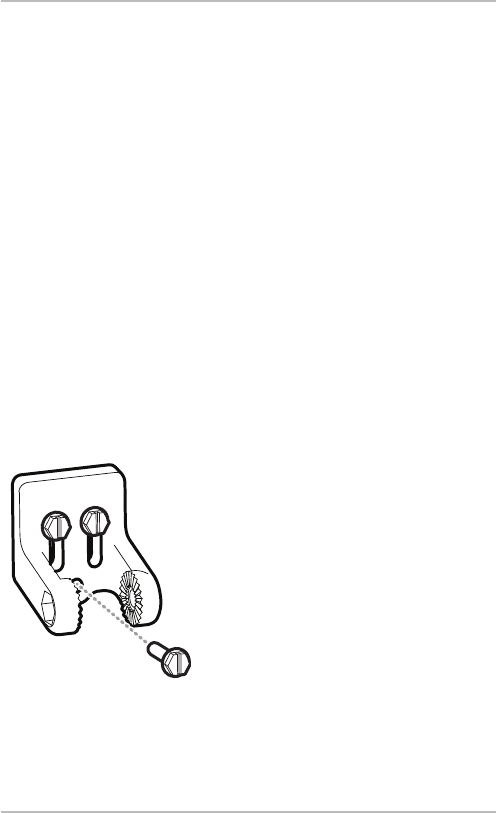
NOTE: It is often necessary to make several incremental transducer adjustments
beforeoptimumhighspeedperformance isachieved.Due tothe widevarietyofboat
hulls, however, itis not always possibleto obtain high speed depth readings.
6. Once you have reached a consistently good sonar signal at the desired
speeds, you are ready to lock down the transducer settings. Remove the
transducer from the bracket (after noting where the ratchets are
assembled),then re-align themountingbracket against the transom of the
boat to match the traced silhouette. Check the bracket position with the
level again to make sure it is still level, then mark the third mounting hole
using a pencil or marker. Unscrew and remove the mounting screws and
the transducer bracket and set aside.
7. Drill the third mounting hole, using a 5/32” drill bit. Use a marine-grade
silicone sealant to fill all three drilled mounting holes, especially if the
holes penetrated the transom wall.
NOTE:On fiberglasshulls,it isbestto useprogressivelylargerdrillbits to reducethe
chance of chipping orflaking the outer coating.
8. Re-position the transducer bracket against
the transom of the boat, then hand-install
all three screws. Make sure that the
transducer location has not changed, then
fully tighten all three mounting screws
(Figure 27). Hand tighten only! Re-install
the transducer to the mounting bracket,
makingsureto assembletheratchetsinthe
samelocationtheyhadbefore.(SeeFigures
18a - 18d and Figure 21 - 22). If you have
performed the preceding procedures
correctly, the transducer should be level
andattherightheightforoptimaloperation.
FullyTightenAllThree
MountingScrews
Figure27
19
Transom Transducer Installation


















